Shannon Justison has been working in animation and visual effects for almost 20 years. She has worked at The Third Floor for over 13 years. She has worked on a number of films such as X-Men: First Class, Mad Max: Fury Road, Thor: Ragnarok and Shang-Chi and the Legends of the 10 Rings. Today she talks about the challenges on She-Hulk: Attorney at Law.
What was your feeling to brought to life this iconic character?
It’s an honor to be part of the team bringing She-Hulk into the MCU. She’s such an idiosyncratic character, she’s quirky and meta and not afraid to poke holes in the entire thing. I’ve been working with Marvel intermittently for more than a decade (since Thor) and while I love an epic fight scene, it’s refreshing to introduce a character who’s a normal person instead of a billionaire or space-god or an alien warrior. And who else gets to break into Marvel itself and go talk to K.E.V.I.N?
How did you organize the work your VFX Producer?
We were really lucky to have Beverly Abbott, a long-time MCU veteran, and Brice Parker, who had just rolled off Dune. At 3060 shots, She-Hulk is the largest MCU show by VFX shot count. When you’re working with those numbers, it’s a tricky balancing act between protecting your vendors so that they can do their best work and ensuring the creatives have the flexibility they need to tell the best story.
We were in constant conversation about the latest developments from all directions, and would collaborate on solving all the logistical headaches that crop up over a long-running show. And while Bev and Brice handled all the behind-the-scenes minutiae of schedules and budgets, they were also creative collaborators. Together we made a really strong team which was critical to a show of this volume and complexity.
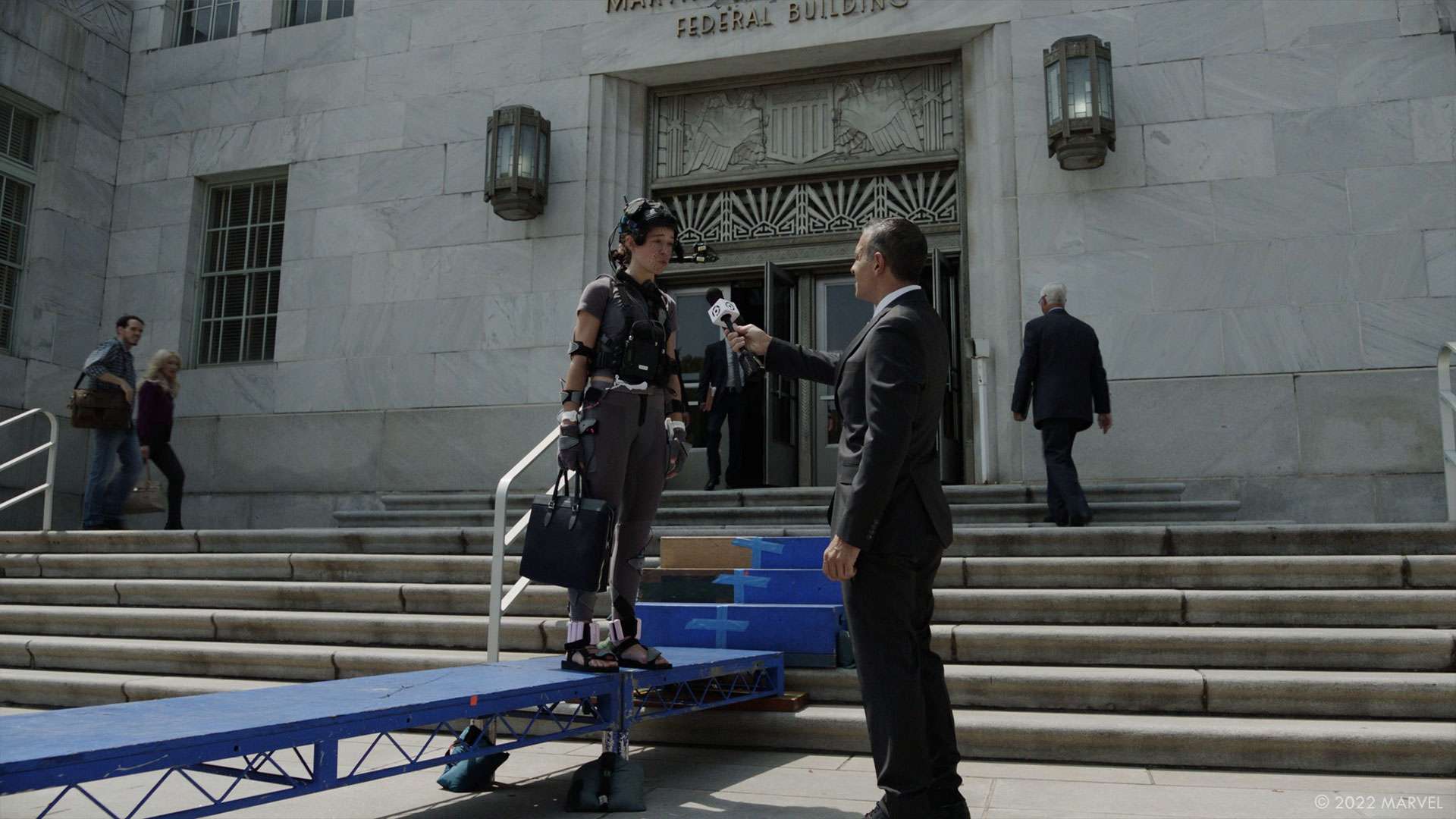
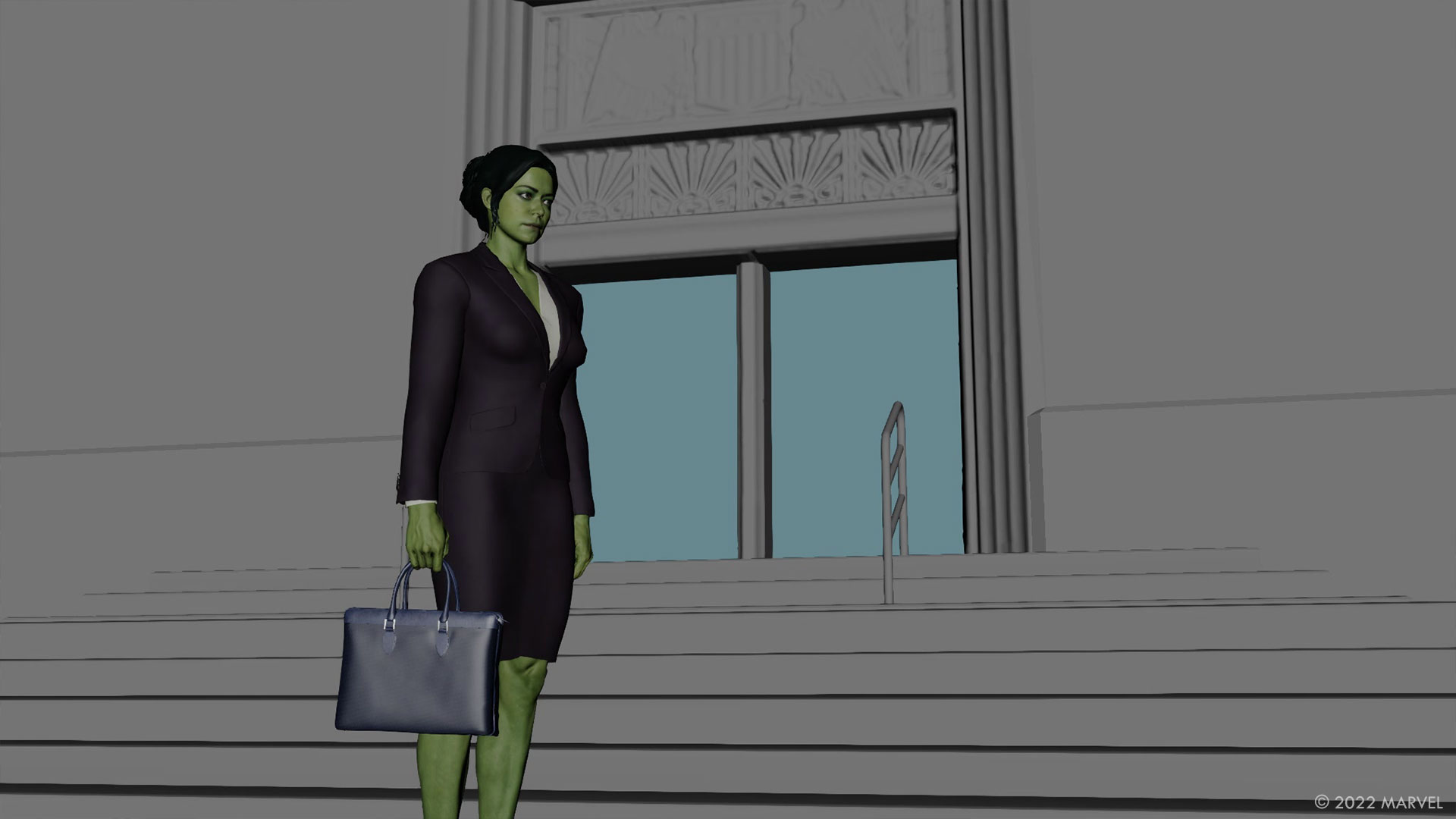
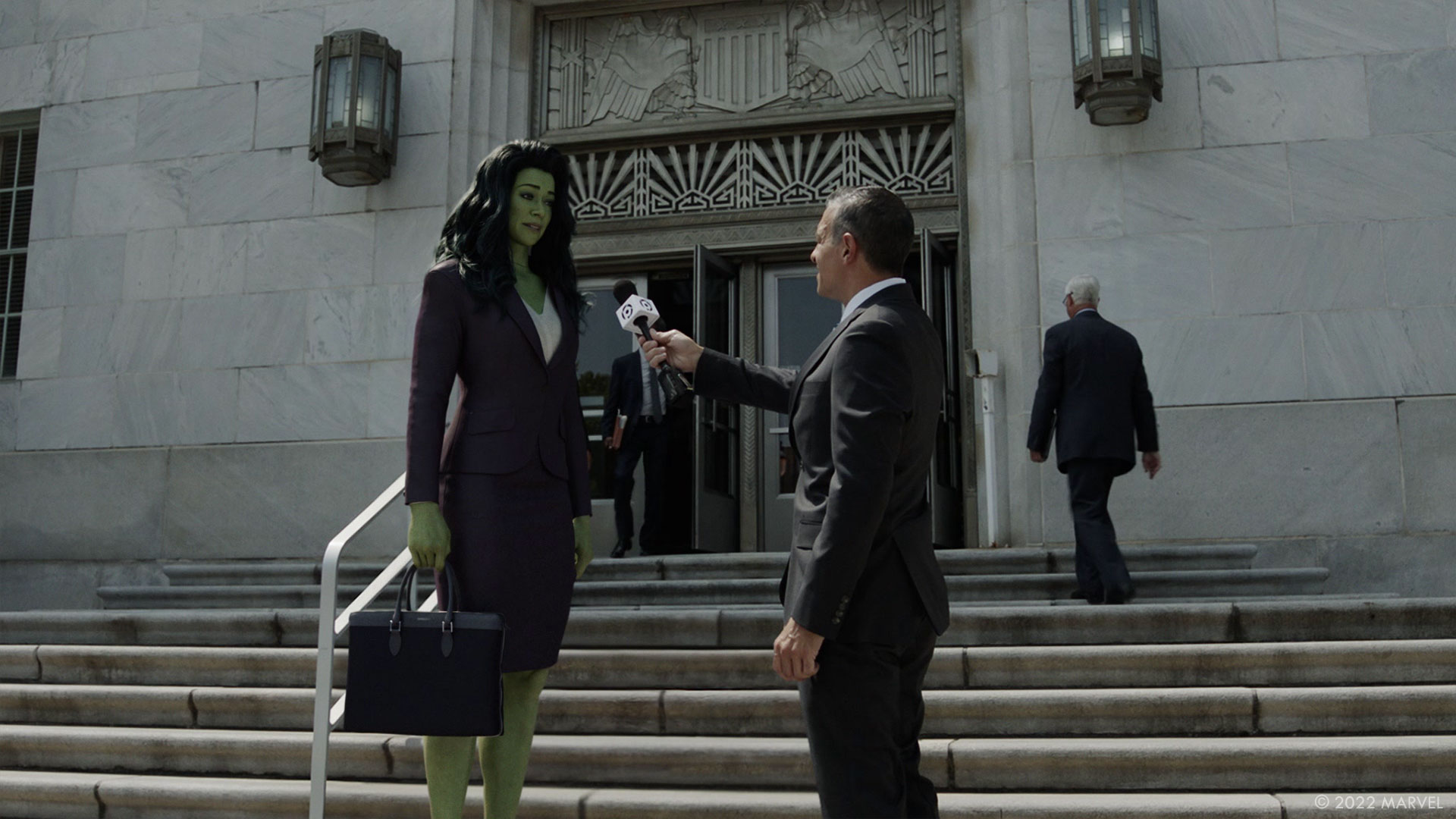
How did you choose the various vendors?
With a show like She-Hulk, where the main character is a visual effect, it was really critical to get the right teams on board. There’s only a handful of vendors in the world who can handle a character like She-Hulk at the volume required for an episodic. We turned to Digital Domain and Weta FX, both of whom worked on Thanos in Infinity War and Endgame. Both DD and Weta have a really deep bench when it comes to character work, and we knew we needed that level of expertise to bring such a challenging character to life. We also reached out Trixter, who had recently brought Abomination back to the MCU for Shang-Chi and the Legend of the Ten Rings. Those were our starting three, with DD and Weta splitting the bulk of the She-Hulk work, and Trixter taking on Abomination’s prison scene along with some of our other non-Hulk CG work. Our Hulk shots (including She-Hulk, Smart Hulk, Abomination, Todd Hulk, and Skaar) totaled just under 1300 shots, so it was essential to have more than one vendor to share that volume.
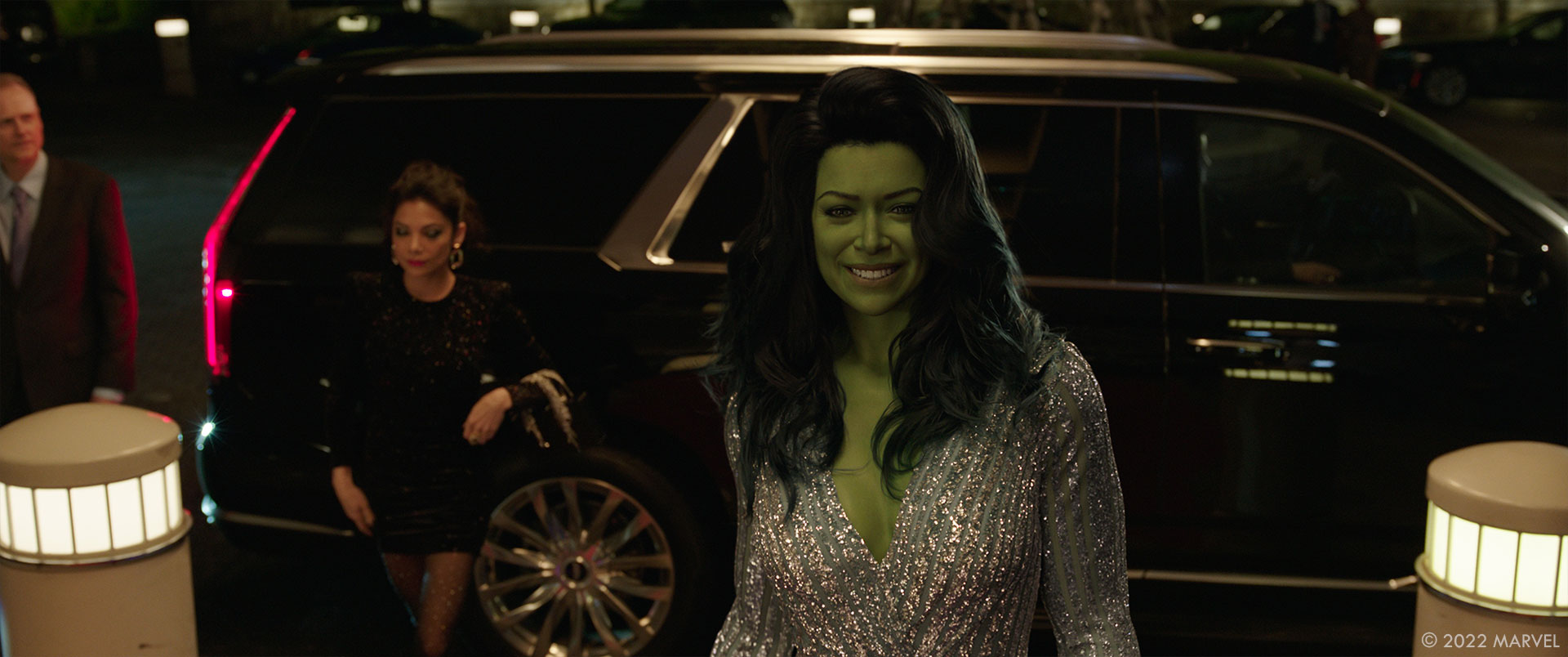
Can you tell us how you split the work amongst the vendors?
With 3000 VFX shots, there’s a lot of work to go around! Our big three (DD, Weta, and Trixter) handled most of the heavy CG work: all our Hulks, but also demons, K.E.V.I.N., and CG environment builds like the Mexican beach, the Supermax prison, and the Inner Sanctum. Wylie was our pinch-hitter for a lot of our 2D work—driving comps, lasers, blue screen comps—and also handled our CG Leapfrog for the robbery sequence. FuseFX helped with our massive volume of window work in GLK&H and Jen’s Apartment. Our show also had a lot of graphics, everything from Bruce’s high-tech monitors to dating apps to news programs. Cantina Creative was our go-to for graphics, but we were fortunate to find the talented Olney Atwell to help with Titania’s branding and the news packages. We had additional work from StereoD, SoHo, Capital T, Exceptional Minds, WeFX, and Ingenuity.
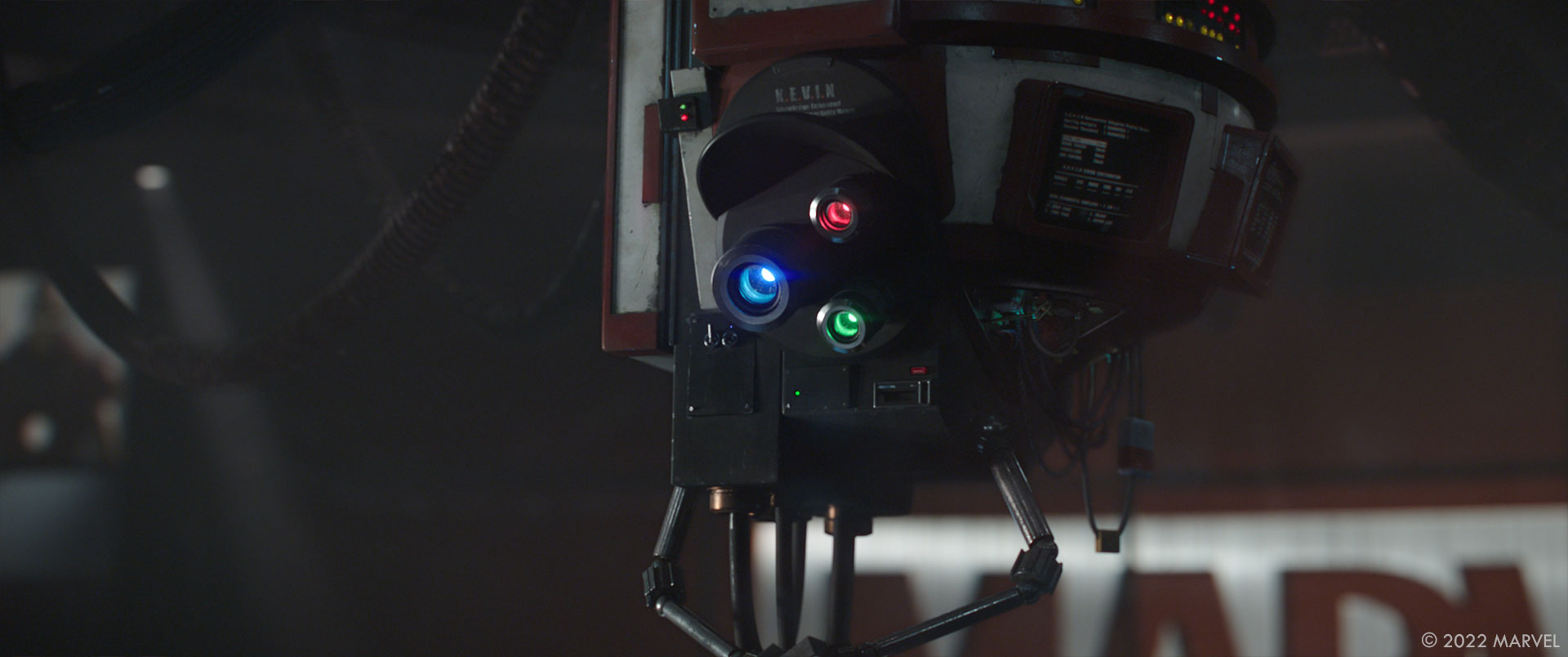
Have you updated the Bruce Banner Hulk model since its previous appearance?
The Endgame Smartie was created by ILM and Framestore; while we started from that same Smart Hulk model, there’s always some subtle differences when a model is adapted to a different pipeline. Weta did a stellar job in bringing Smartie to life for us and letting everyone see a different side of Bruce.
How did you handle the various transformations into Hulk?
These are some of the hardest shots in the entire show. We have a lot of transformations; more than any other previous feature with Hulk himself. We were also running with the creative brief that She-Hulk transforms very elegantly; she doesn’t have a painful monster transformation. While shooting, we used a boom riser for Tatiana for many of the transformation shots; she would be in her mocap suit and HMC and the grips would raise her up according to the timing of her performance.
Once we were in post, one of our biggest challenges was keeping the transformations from looking like a morph, especially as so many of hers are performed standing still. Her hair was really finicky since her hairstyle is different between her two forms. We used the differences in texture to hide some of the retraction, with the idea that Jen’s curls hid a lot of the length. Any shot where we were backing into a plate of Tatiana as Jennifer were the most challenging, as we needed to get the CG Jennifer to perfectly align with the plate. Sometimes we kept her hair CG the entire time, even once she was fully back to the plate performance.
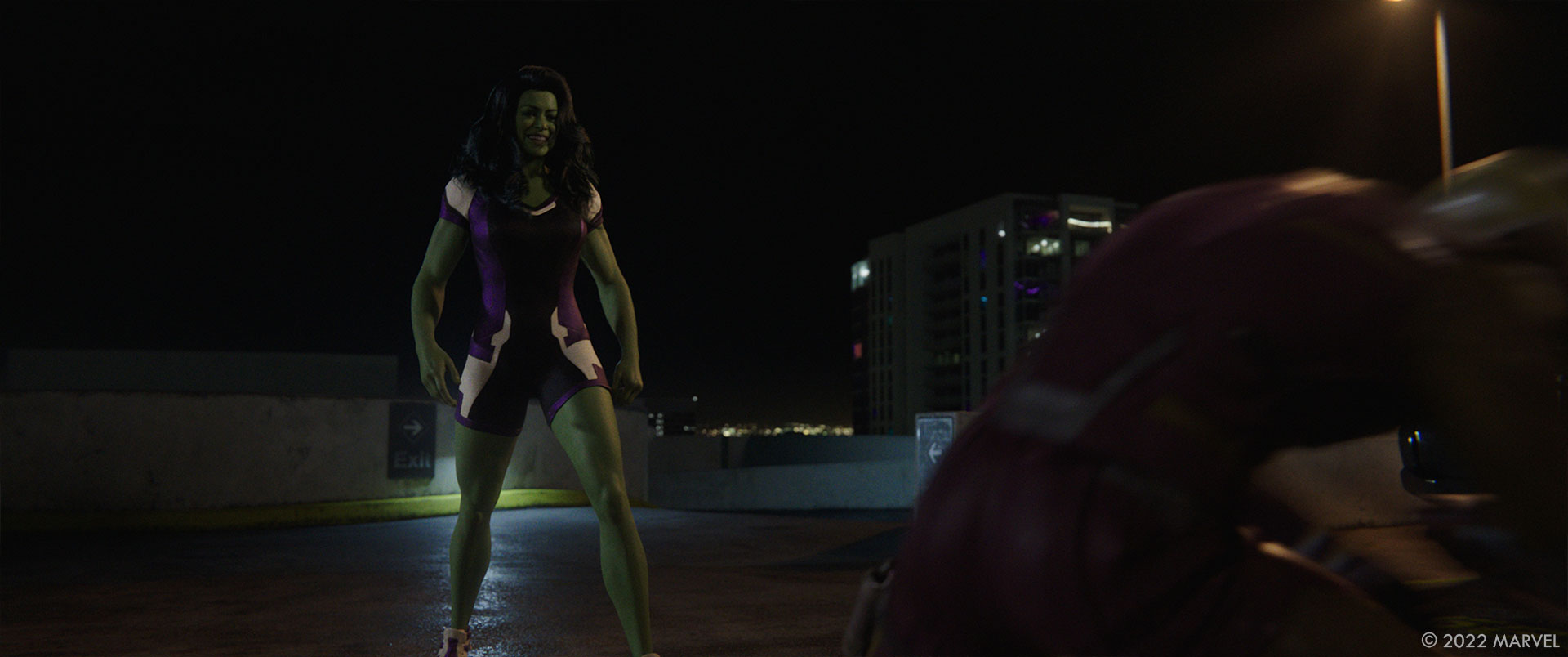
In few shots the actors have different sizes. How was filmed these shots?
We used two different methods depending on the scene requirements. The classic is the eyeline pole, which everyone has seen in behind the scenes videos by now. The other option we used was steel decks, which would create an elevated blue runway for the actor at the right height. The advantage of the decks is that the actors can perform with each other and the eyelines will be more accurate. However, it’s a big ask for the rest of the shooting crew, and then in post, we’re dealing with a lot of occlusion that has to be cleaned up. We used these two methods for Smart-Hulk and She-Hulk based on the shot design of a given scene.
However, Abomination is eleven feet tall, so an eyeline pole would have been unwieldy, and even a deck would have been awkwardly high. We had a scale reference of Abomination we would wheel temporarily on to the stage so that camera and the actors knew where to set their gaze. He really is enormous, but fortunately he’s only in a handful of shots.
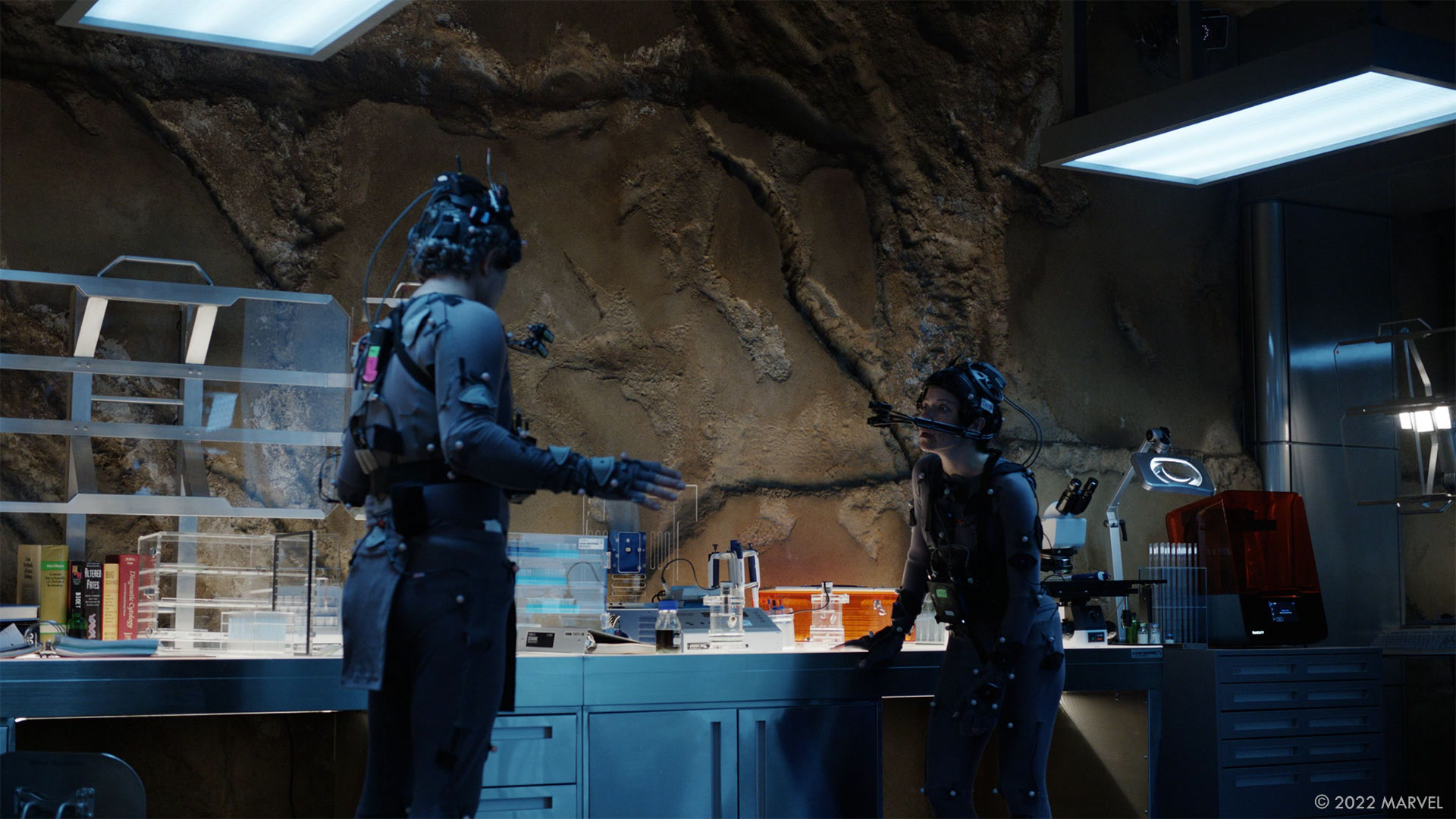
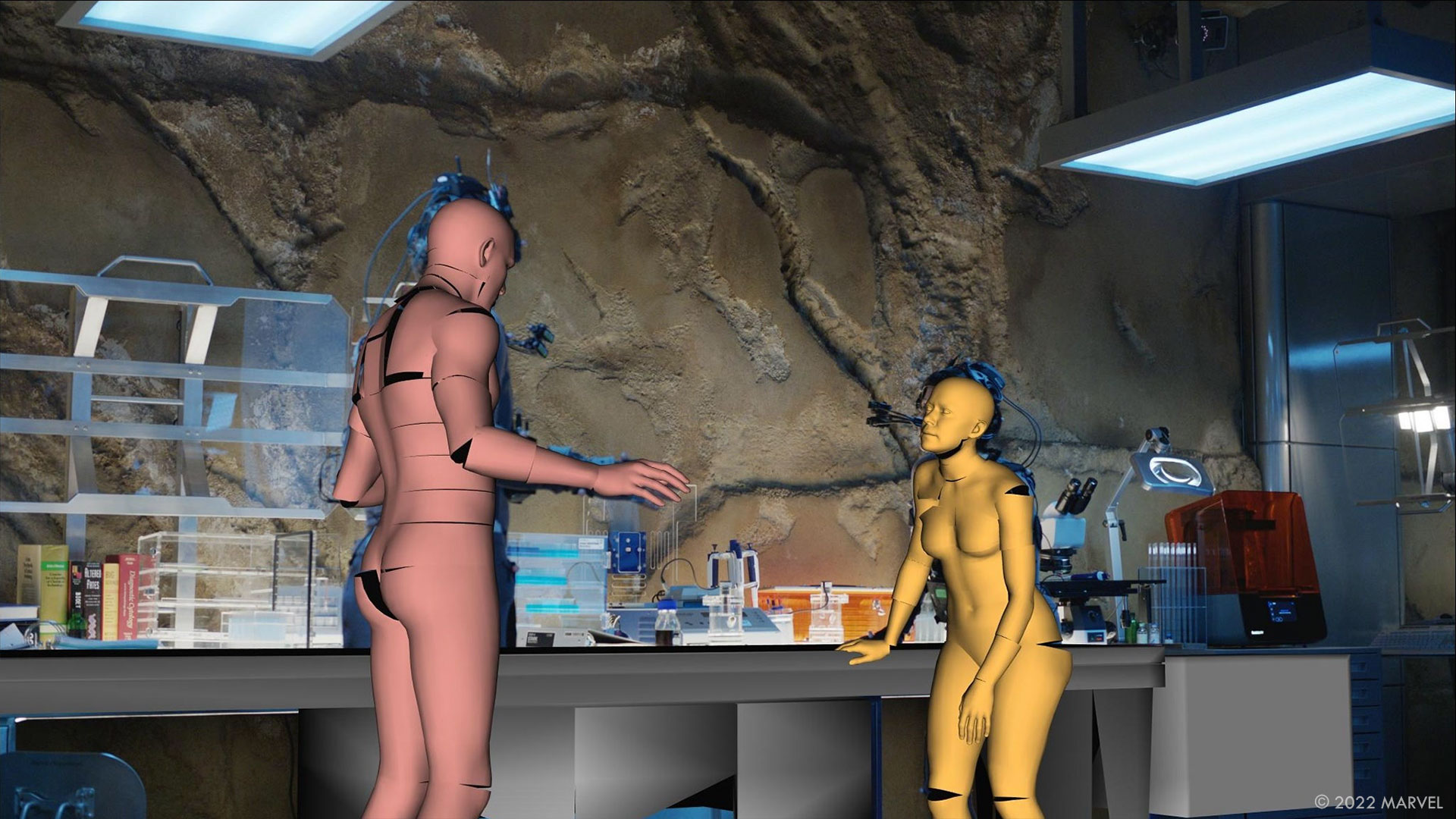
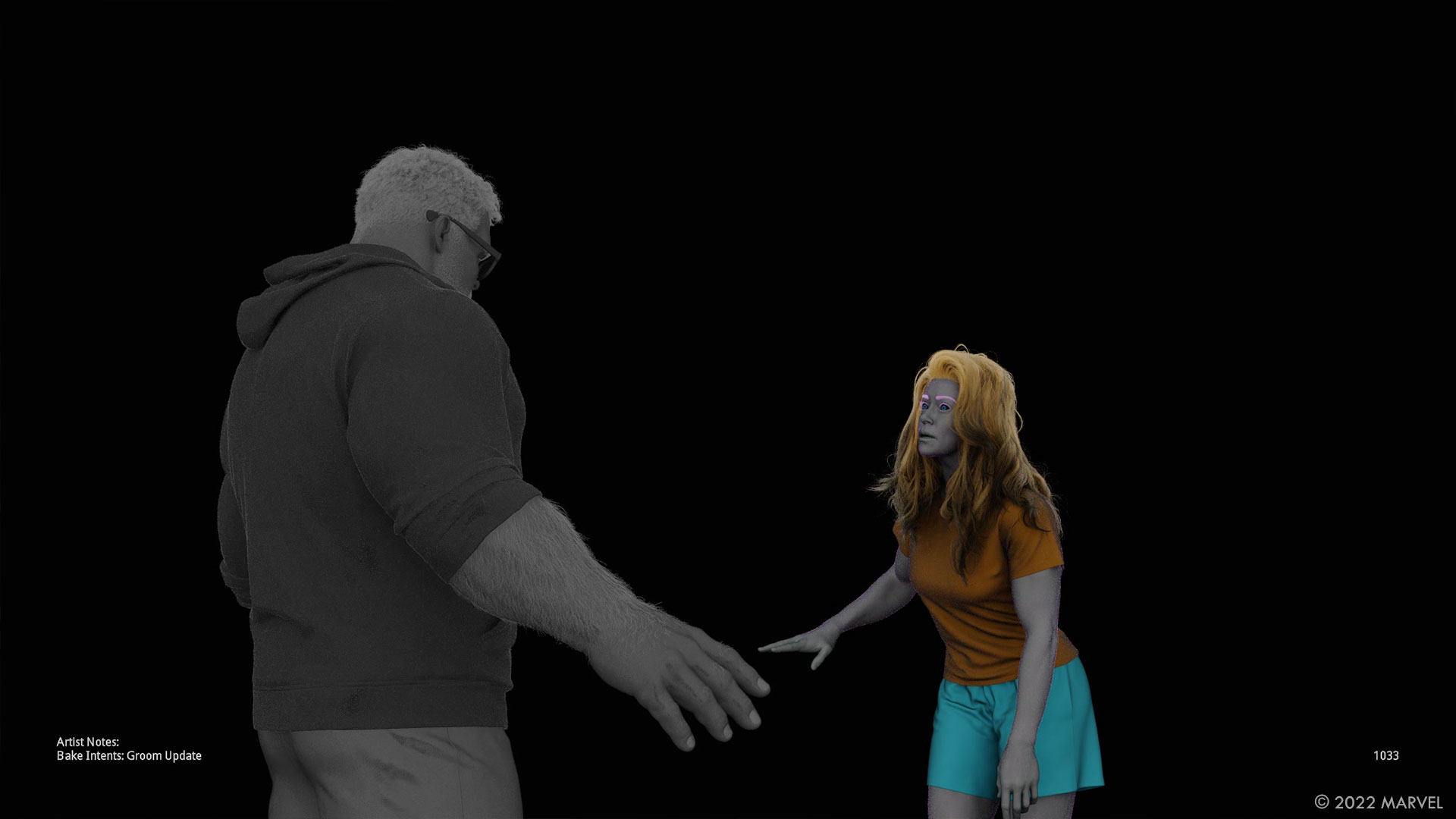
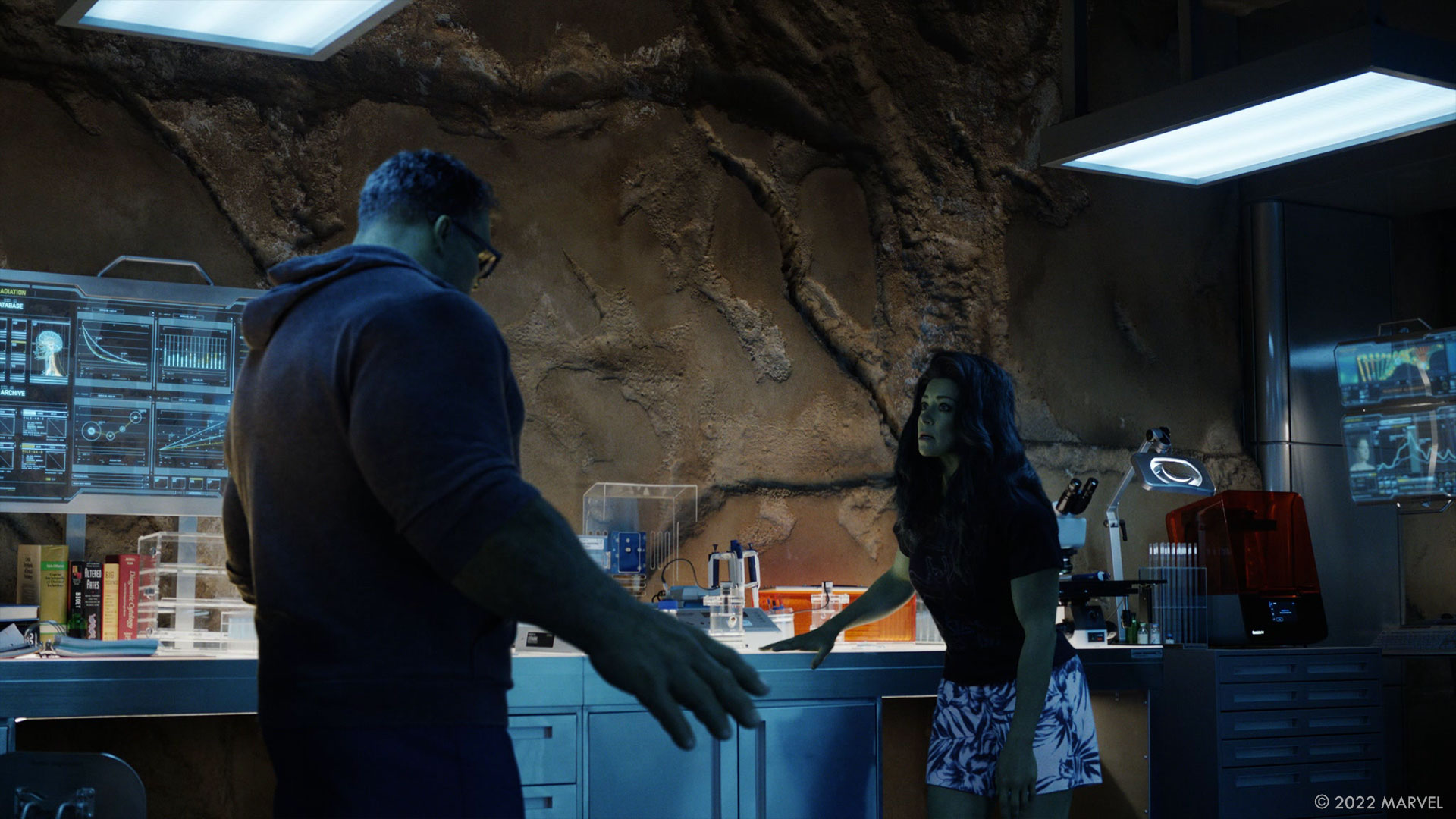
What was the main challenges with She-Hulk?
The very nature of the show was the biggest challenge: we have a digital human as a main character in over one thousand shots. She-Hulk is more human than Abomination, classic Hulk, or even Smart-Hulk, and she had to perform across a much wider emotional range than has been historically required of the other Hulk characters. You’re also seeing her in real-world environments with human actors, rather than the heightened realities of say, an alien planet or a gladiatorial arena. Not only that, She-Hulk has fabulous hair and twenty-five costumes. She is vastly more complex than any other Hulk in MCU history, and oh yeah, we have to build her from scratch! We also had two additional characters to develop, Todd-Hulk and Skaar. Even though Skaar only shows up for a single shot, we couldn’t cut any corners. At least he doesn’t have long hair.
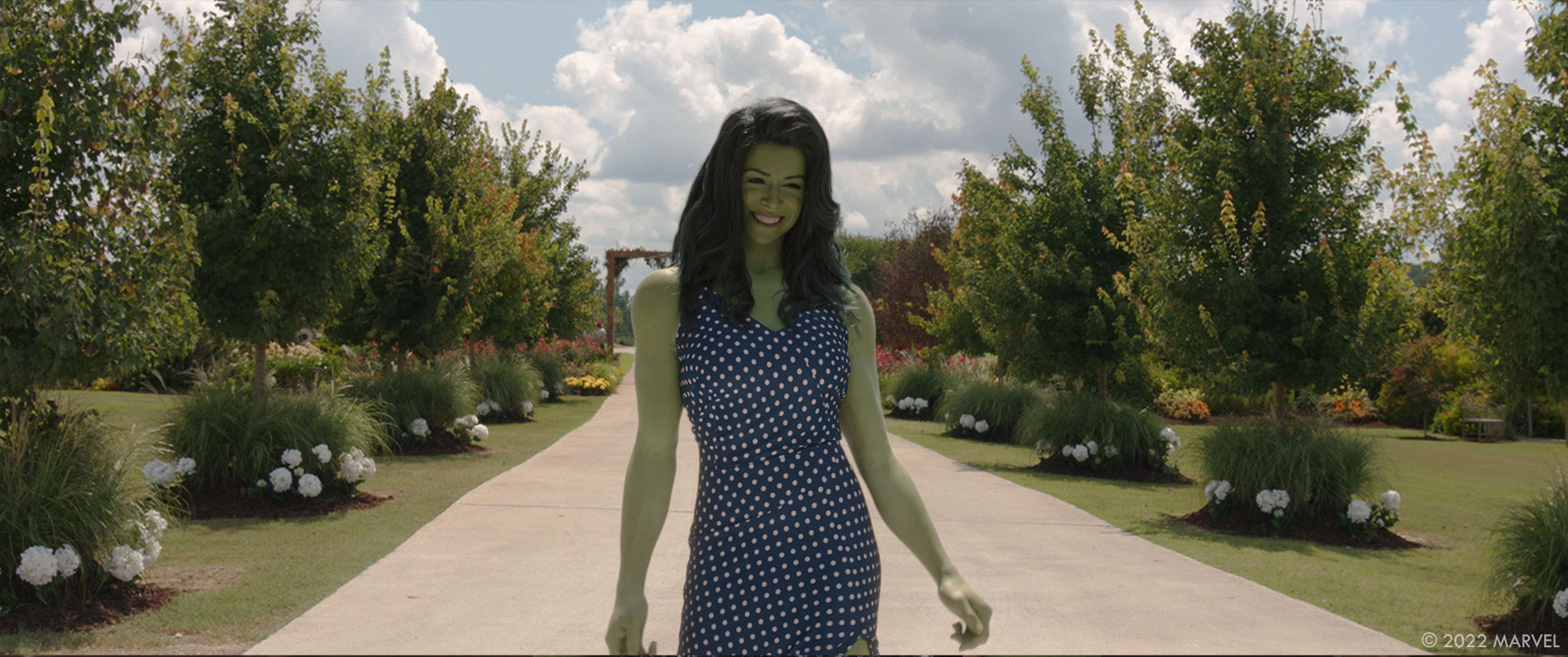
Did you used the LED technology for specific environments?
We did not.
Did you want to reveal to us any other invisible effects?
It’s probably not invisible to other VFX professionals, but most of the She-Hulk vs Daredevil fight in episode 8 is CG. This was largely due to the secrecy around Daredevil—we weren’t allowed to bring his costume out on location, so we were only able to shoot clean plates and the stunt-driving shots at the garage. We scanned the heck out of that garage knowing we’d have to rebuild it digitally. Then there was only a single day to shoot Charlie’s close-ups on blue. We did a big stunt mocap shoot for the fight action and parkour moves, which was a huge help. The entire scene was a real jigsaw puzzle in post—a mix of clean plates, stunt mocap, blue screen performances, volume pick-ups for Tatiana’s performances, and driving plates for Leapfrog. We worked closely with editor Jamie Gross and our postvis team at The Third Floor to reconstruct all the parts into a coherent scene, and then turned the whole thing over to Weta to let them work their magic.
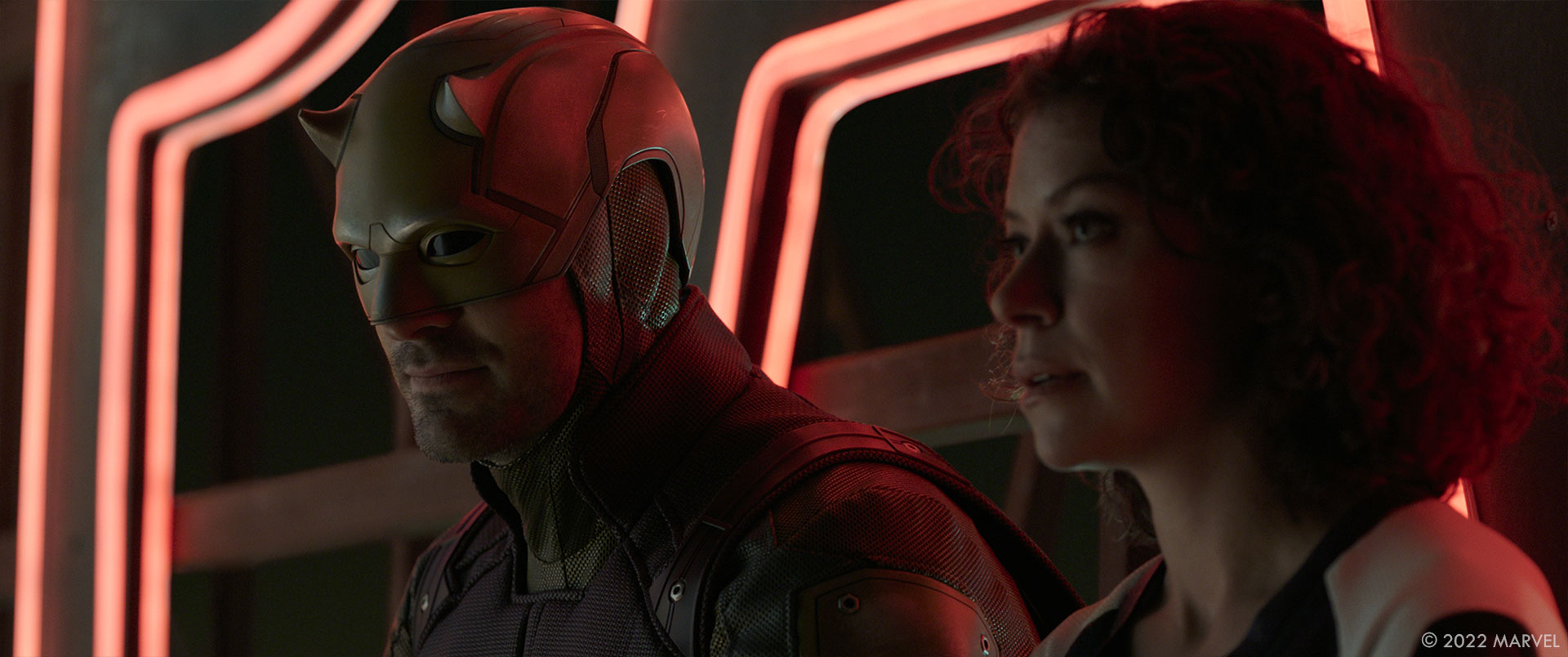
Which sequence or shot was the most challenging?
The monologue in the Room of Feelings was the most challenging shot. Not only is it over 2000 frames long, it’s pure performance with nowhere to hide. And then someone in a studio review called it the “most important shot in the show” so, no pressure! But it’s true—She-Hulk is delivering this incredibly emotional speech about everything she has struggled with throughout the season, so it absolutely had to land. We had an amazing performance from Tatiana that was performed in-situ, so we did start with mocap and HMC, but even then, most of the time in post was spent in animation, ensuring that every minutiae of Tatiana’s performance came through. Our incredible team at Digital Domain worked tirelessly to harness every detail. This single shot took eight months to complete.
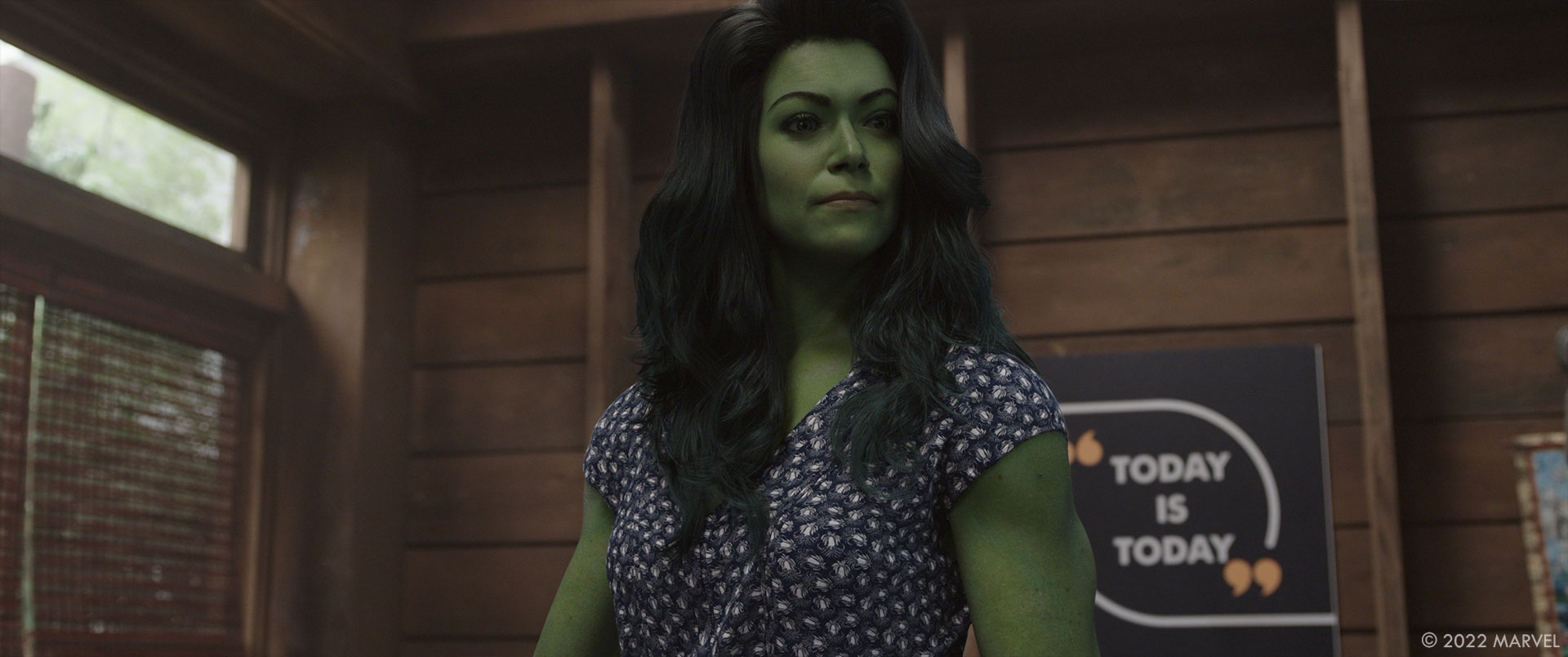
What is your best memory on this show?
It’s really hard to pick one! I was incredibly lucky to work with so many talented people, from our incredible vendors, the other departments, and my own VFX team. These shows are marathons and getting to work with good people is critical to keeping your sanity over the long haul. However, I have two examples that stand out; one from principal and one from post.
During the shoot, if we had a She-Hulk scene with a lot of occlusion, we’d run a ghost pass after we finished the hero takes. It was late in principal when we were shooting the Marvel security hallway fight with 2nd unit, and there’s a part at the end where She-Hulk is throwing security guards around. I remember standing with Monique, the 2nd Unit Director, and asking if we could try for a ghost pass, figuring that the answer was a hard no. But bless them, the stunt team was game to try it. The result were these amazing takes that look like people fighting an invisible giant. We were all laughing and cheering the stunt team on; they really went all out.
Then in post, we were working the Megan Thee Stallion twerking scene. Those have to be some of the strangest notes I’ve ever given. When we got to sims, I remember researching “twerking in business suit” and thinking, well, this is how I end up on a Disney watchlist. It took a lot of rounds of getting the muscle and cloth and hair sims just right—it had to be funny but not cartoonish, which is a really fine line to walk with something that is conceptually absurd. Then there was finally the day where it all came together, and I knew we had it, and we screened for the studio and everyone just had these big smiles and this “what did we just do” look, because there was no way they were cutting it now.
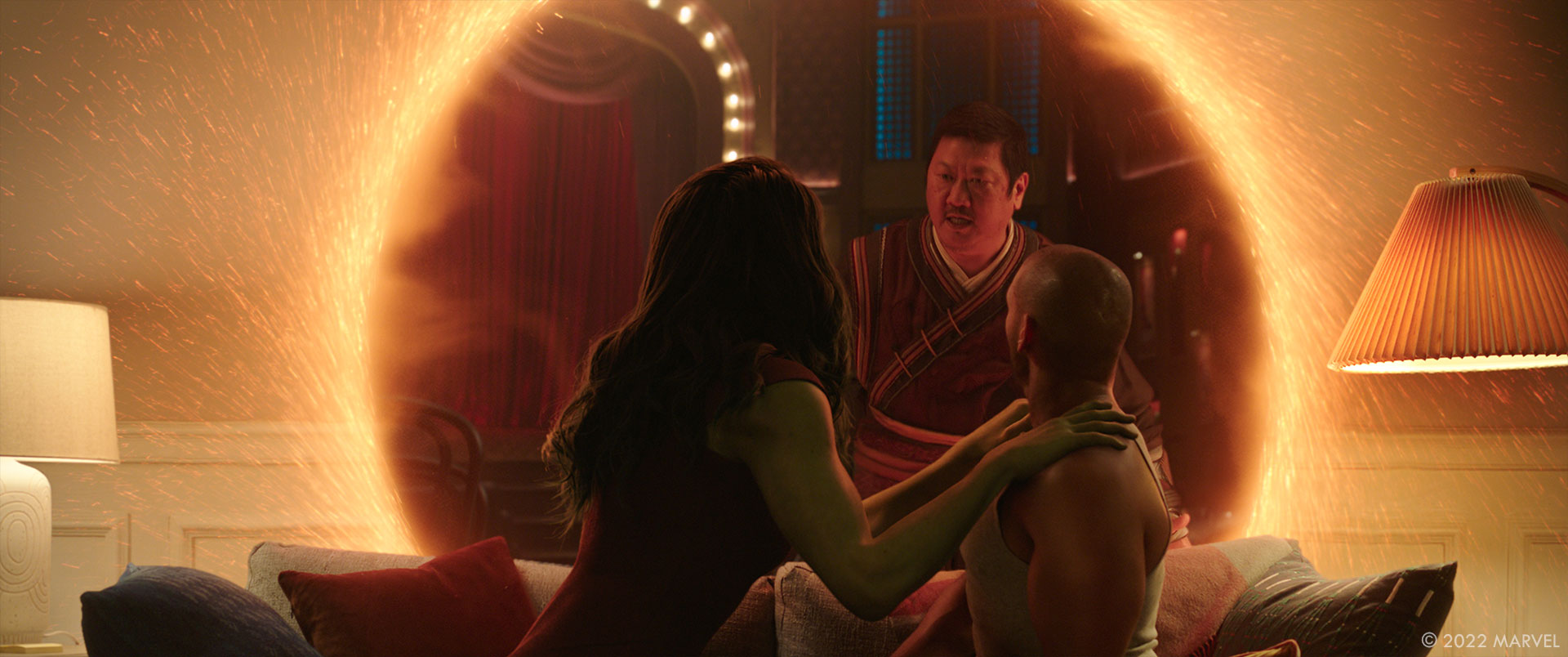
How long have you worked on this show?
Just over a year and a half.
What is your next project?
Vacation!
A big thanks for your time.
// Behind the Scenes | VFX of Marvel Studios’ She-Hulk: Attorney at Law
WANT TO KNOW MORE?
Digital Domain: Dedicated page about She-Hulk on Digital Domain website.
Trixter: Dedicated page about She-Hulk on Trixter website.
Weta FX: Dedicated page about She-Hulk on Weta FX website.
Disney+: You can watch She-Hulk on Disney+ now.
© Vincent Frei – The Art of VFX – 2022






